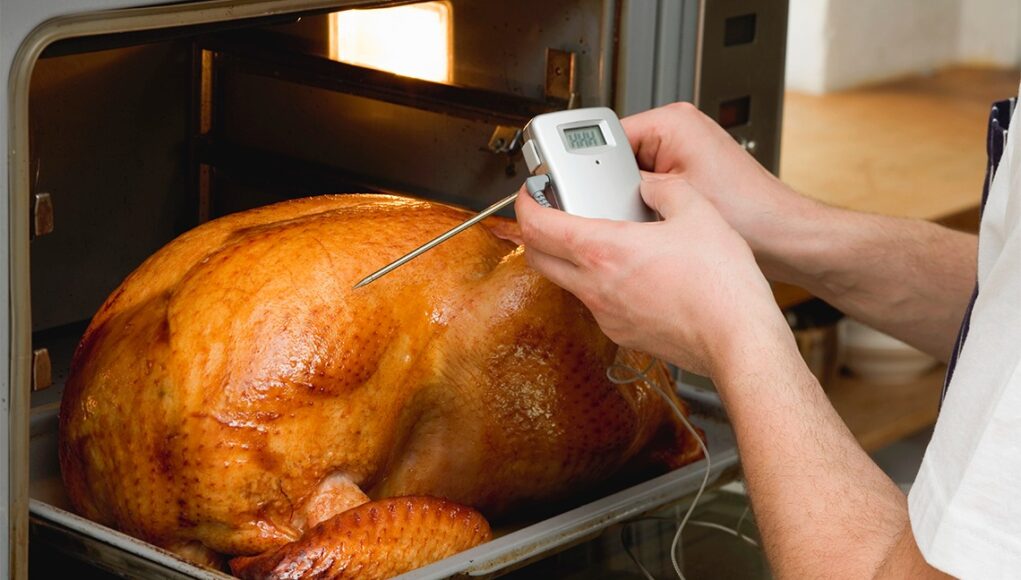Calibrating your meat thermometer ensures that your cooking is precise, safe, and delicious. Understanding how to calibrate a meat thermometer in ice water can greatly improve your cooking, especially when it comes to chicken and other meats. In this article, we will provide a comprehensive guide on how to perform this important task, ensuring that you are delighted with the results every time you cook.

What is Calibration and Why is it Important?
Calibration is the process of adjusting a device to ensure its accuracy. For meat thermometers, calibration is crucial because inaccurate readings can result in undercooked or overcooked meats, which may lead to foodborne illnesses or less enjoyable meals. Regular calibration guarantees that your thermometer provides precise readings, giving you confidence in your cooking.
:max_bytes(150000):strip_icc()/faw-meat-thermometers-test-thermoworks-chefalarm-rkilgore-19-f1a0c722c7b64683814f4c76104c449c.jpeg)
Why Calibrate Using Ice Water?
- Ice water provides a stable temperature point, making it a reliable method for calibration.
- Easy to prepare with just ice and water.
- Standard freezing point (32F or 0C) is universally acknowledged.

Materials Needed for Calibration
- Meat thermometer
- Glass or bowl
- Ice cubes
- Water
- Adjustable wrench (if required)
- Instructions manual (for specific thermometers)
Step-by-Step Guide to Calibrate Your Meat Thermometer
Step 1: Fill A Glass with Ice
Start by filling a glass or bowl with ice cubes. This is the foundation for creating an ice water mixture. Ensure that you use enough ice to keep the water cold during the calibration process.
Step 2: Add Cold Water
Pour cold water into the glass until it is full. The water should be just above the ice cubes, creating an ice water mixture. Stir the mixture well, which helps bring the temperature of the water to 32F (0C).
Step 3: Insert Your Thermometer
Place the meat thermometer into the glass, ensuring that the probe is fully submerged in the ice water but does not touch the sides or bottom of the glass. Allow the thermometer to sit in the water for at least 30 seconds to reach a stable reading.
Step 4: Check the Temperature Reading
After 30 seconds, check the temperature reading on the thermometer. It should read 32F (0C). If it does, your thermometer is accurate. If not, proceed to the next step to adjust it.
Step 5: Adjust the Thermometer
If your thermometer does not read 32F (0C), use an adjustable wrench to turn the calibration nut located under the thermometer’s head. Turn the nut until the thermometer reads 32F (0C) while still submerged in the ice water. Some digital thermometers may have a reset button for this purpose.
Step 6: Verify the Accuracy
Remove the thermometer from the ice water, dry it off, and then repeat the process to ensure it consistently reads 32F (0C). This second check confirms the accuracy of your calibration.
When to Calibrate Your Meat Thermometer
- After purchasing a new thermometer.
- Before cooking a large meal, like Thanksgiving dinner.
- After dropping or damaging the thermometer.
- Once every six months for routine maintenance.
Tips for Accurate Calibration
- Use a high-quality thermometer.
- Ensure the ice water mixture remains at a stable temperature throughout the process.
- Follow manufacturer instructions specific to your thermometer model.
Common Mistakes to Avoid
- Not fully submerging the probe in water.
- Using tap water instead of ice water.
- Skipping the adjustment step if readings are off.
Alternative Calibration Methods
While calibrating with ice water is a reliable and easy method, you can also use boiling water or reference thermometers for calibration. However, ice water remains the most accessible for home cooks.
Frequently Asked Questions
What is Calibration?
Calibration is the process of adjusting the thermometer to ensure its readings are accurate. It is essential for getting precise temperature measurements during cooking.
Why Use Ice Water?
Ice water provides a constant and reliable temperature (32F or 0C), making it an ideal reference for calibration. It is easy to prepare and ensures a stable condition for accurate adjustments.
How Often Should I Calibrate?
Calibrate your meat thermometer whenever you purchase a new one, after dropping it, or every six months for routine maintenance to ensure consistent accuracy.
Conclusion
Understanding how to calibrate a meat thermometer in ice water is an invaluable skill for all home cooks. It ensures that your meat is cooked safely and to perfection, helping you avoid foodborne illnesses and achieve delicious results. By following the steps outlined in this guide, you can easily and effectively calibrate your meat thermometer at home.
Additional Resources
For further information on using meat thermometers, check out these articles:
As an Amazon Associate, I earn from qualifying purchases.









